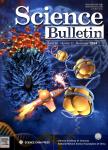A comparative study on thermo-economic performance between subcritical and transcritical Organic Rankine Cycles under different heat source temperatures
A comparative study on thermo-economic performance between subcritical and transcritical Organic Rankine Cycles under different heat source temperatures作者机构:Key Laboratory of Low-grade Energy Utilization Technologies and Systems Ministry of Education Chongqing University College of Power Engineering Chongqing University
出 版 物:《Chinese Science Bulletin》 (中国科学通报)
年 卷 期:2014年第59卷第28期
页 面:4379-4387页
核心收录:
学科分类:080702[工学-热能工程] 08[工学] 0807[工学-动力工程及工程热物理]
基 金:supported by the National Basic Research Program of China(2011CB710701)
主 题:热源温度 经济性能 朗肯循环 跨临界 亚临界 功率输出 能源成本 出口温度
摘 要:In this paper, the net power output, exergy efficiency and levelized energy cost of system were selected as performance indicators for assessing Organic Rankine Cycle(ORC). Firstly, the turbine inlet temperature and pressure meeting the requirement of pinch point temperature difference of evaporator in transcritical ORC(trans-ORC) were determined based on performance optimization. Subsequently, the thermo-economic performance of a subcritical ORC(sub-ORC) using R601 as working fluid and a trans-ORC using R134 a as working fluid were compared under different heat source temperatures and a fixed outlet temperature of flue gas. Results show that for trans-ORC, when the pinch point temperature difference of evaporator lies between the inlet and outlet of evaporator, a lower inlet pressure of turbine is favorable; when the pinch point temperature difference of evaporator is located at the outlet of evaporator, there exists an optimal inlet pressure of turbine. Either for sub-ORC or trans-ORC, the net power output increases and levelized energy cost decreases with the increase in heat source temperature. For sub-ORC,exergy efficiency of system increases monotonously with heat source temperature, while for trans-ORC, exergy efficiency of system grows up firstly and then reduces(or keeps constant) with the increasing of heat source temperature. Moreover, for net power output and exergy efficiency of system, there exist a range of heat source temperatures making trans-ORC better than sub-ORC, and the heat source temperature region extends with the increase in pinch point temperature difference of evaporator. For levelized energy cost of system, the sub-ORC is always superior to trans-ORC.



